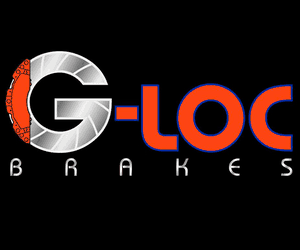Track flags represent a vital way for the track to communicate important messages to drivers. For track day events such as high performance driving events (HPDEs), their meaning is pretty straight forward. When looking at them from a competitive wheel-to-wheel event perspective, you need to gain a better understanding of how to react to these messages. Don’t think this section is just for the first time track driver. In some circumstances, knowing how to further interpret their meaning can provide you a competitive advantage in a race.
Green Flag
 Of course this is the fun one! It is typically displayed by the starter to indicate the start of a session. During a session when under a caution period, it means that the session is restarting.
Of course this is the fun one! It is typically displayed by the starter to indicate the start of a session. During a session when under a caution period, it means that the session is restarting.
Yellow Flag
 Caution, there is a hazard that you need to be aware of and slow down for.
Caution, there is a hazard that you need to be aware of and slow down for.
A single stationary yellow flag means there is a hazard that is typically off the track. A single yellow flag being waived indicates that the hazard is on the racing surface. You will often notice a difference in how the flag is being waived depending upon the severity of the hazard. Regardless, you need to be extra careful.
For HPDEs: Once you see the yellow flag even if before the station, you should not attempt passing a car. Once past the flag station showing the yellow flag, you typically can not pass until after the next non-yellow flag station. This is not a competitive event and you should take extra precaution.
For Racing: To determine when you are allowed to resume passing, refer to your Club’s rule book as these regulations can be different and change. For Clubs that allow passing right after the hazard (including SCCA and NASA as of 2013), you still need to be careful because it’s possible there is another hazard.
Two yellow flags indicates the entire course is under yellow (full course yellow). All stations will display double yellow flags for all pace and safety car laps. Drivers are not required to significantly slow their vehicles; however, you should be prepared to encounter a “local Yellow Flag” situation and/or a Pace Car. When racing and past the hazard, use this opportunity to catch up with the next car in front of you if not already close to it. We see many drivers continue at a very slow pace even when the next car is out of their sight. While still driving safely, catch up to them. If you don’t, be prepared for several frustrated racers behind you.
During a race when following a pace car, the lights on top will be turned off to indicate that the next lap the session will go green. There can be times when you are further back in the pack, are unable to see when the starter waives the green flag and don’t have someone on radios to communicate to you. At least when racing with SCCA, what you can do is look at the last corner station and watch for when the pull the yellow flags down. (Sometimes this is just a little before the green flag is being waived, but is in the progress.) At that point in time, the course is now open.
Here’s a real life example of this situation. I was racing in SCCA’s Improved Touring B (ITB) class where we were mixed with another faster class. As a result during the full course caution, the leader and I were a ways back from the pace car and overall leader. We approached the last turn preceding the starting line, and the corner station on the left pulled the yellow flags. Watching for this enabled me to get on the gas faster then my competitor who was next to me, and enabled me to get into the lead. (This can be seen beginning at 3:38 left in the video, although being biased the spin in the beginning and difficulty getting into 4th gear make the rest of the video entertaining.)
httpv://www.youtube.com/watch?v=h8Qrg2M6lfU&list=UU_OCPoKWfk1tacw0mYjQ6ow
Yellow and Red Striped Flag
 This flag is referred to as the debris flag and indicates that there is a potential hazard on track that could cause you to lose control. Often times it represents oil, coolant, sand, or small pieces of debris. It can also be “rocked” back and forth (but not waived) to indicate a small animal is on the racing surface. (This flag may be rescinded after two laps even if the hazard remains.)
This flag is referred to as the debris flag and indicates that there is a potential hazard on track that could cause you to lose control. Often times it represents oil, coolant, sand, or small pieces of debris. It can also be “rocked” back and forth (but not waived) to indicate a small animal is on the racing surface. (This flag may be rescinded after two laps even if the hazard remains.)
Red Flag
 Displayed at each station and on the Starter’s stand – EXTREME DANGER – the session has been stopped. Come to an immediate, controlled stop at the side of the race track (preferably before and within sight of a staffed flag station). It does not mean to slam on your brakes! Be aware that it’s possible the driver behind you does not see this flag. Since there often can be debris off the racing surface, just go to the side of the track and do not drop wheels off into the grass or dirt. If you are not in sight of a flag station, remain where you are and do not start creeping forward to a location where you can see it. When the red flag is taken down, the session will become a Black Flag All situation where you will see other cars slowly proceeding to pit lane.
Displayed at each station and on the Starter’s stand – EXTREME DANGER – the session has been stopped. Come to an immediate, controlled stop at the side of the race track (preferably before and within sight of a staffed flag station). It does not mean to slam on your brakes! Be aware that it’s possible the driver behind you does not see this flag. Since there often can be debris off the racing surface, just go to the side of the track and do not drop wheels off into the grass or dirt. If you are not in sight of a flag station, remain where you are and do not start creeping forward to a location where you can see it. When the red flag is taken down, the session will become a Black Flag All situation where you will see other cars slowly proceeding to pit lane.
White Flag
 Caution and take care for a slow moving race car, ambulance or other emergency vehicle on the racing surface. You should pass the vehicle, just do so safely. This flag is displayed for two flag stations prior to the vehicle in question.
Caution and take care for a slow moving race car, ambulance or other emergency vehicle on the racing surface. You should pass the vehicle, just do so safely. This flag is displayed for two flag stations prior to the vehicle in question.
Some clubs and/or regions will also display a closed white flag on the starter stand to represent one lap to go. Others display a number board showing one to go displayed from the starter stand. (Neither are guaranteed to be displayed.) While these are nice warnings that the race is nearly ended, it is an advisory flag only. You need to race until the checkered flag is shown. Typically it is accurate, but there have been times when it has been displayed only to have yet an additional lap than anticipated. A prime example of this is the first SCCA Spec Miata race at the new Circuit of the Americas track in Texas. The one to go signal was given, and the next time around the field of cars were not shown the checkered flag. Some drivers got caught off-guard and let up, but shouldn’t have. Again, race until the checkered flag is shown.
Blue Flag with a Diagonal Yellow Stripe
 Another competitor is following very closely or is trying to overtake. This flag may be displayed standing or waving, depending upon the speed differential. With SCCA and NASA, it is simply a warning to you and does not mean you need to allow them to pass. If the car behind is one of the leaders, it is recommended that you safely let them by, but be predictable!
Another competitor is following very closely or is trying to overtake. This flag may be displayed standing or waving, depending upon the speed differential. With SCCA and NASA, it is simply a warning to you and does not mean you need to allow them to pass. If the car behind is one of the leaders, it is recommended that you safely let them by, but be predictable!
Black Flag
 Closed Black Flag (Flured) – When pointed or shaken at your car (it is sometimes accompanied by a number board indicating the car number), it serves as a warning for driving in an unsafe and/or improper manner. This is flag is advisory only. Continued unsafe and/or improper driving will result in an open black flag.
Closed Black Flag (Flured) – When pointed or shaken at your car (it is sometimes accompanied by a number board indicating the car number), it serves as a warning for driving in an unsafe and/or improper manner. This is flag is advisory only. Continued unsafe and/or improper driving will result in an open black flag.
Open Black Flag – this is displayed from the Starter’s stand or another flag station with a number board indicating the car number. If it pertains to you, proceed directly to the pits without taking another lap. Once in pit lane, an official will usually direct you where to stop.
Open Black Flag, Displayed at all Stations – the session has been stopped; all cars must stop racing, and safely proceed directly to pit lane. This flag will be displayed with an ‘ALL’ sign at the Starter’s stand and the sign may also be shown at a station(s) elsewhere on the course.
Mechanical Black Flag (Black with Orange Ball)
 There is a mechanical problem with your car such as an oil or fuel leak. Proceed directly to pit lane without taking another lap.
There is a mechanical problem with your car such as an oil or fuel leak. Proceed directly to pit lane without taking another lap.
|
Checkered Flag
 The session is over. After crossing the finish line, slow down to a safe speed such that you can avoid heavy use of the brakes so they will cool down, and proceed to pit lane and exit the track. Please waive to the corner workers who are volunteering their time; it shows your appreciation for what they do.
The session is over. After crossing the finish line, slow down to a safe speed such that you can avoid heavy use of the brakes so they will cool down, and proceed to pit lane and exit the track. Please waive to the corner workers who are volunteering their time; it shows your appreciation for what they do.
The above flag definitions represent commonly used meanings on road race tracks. Please refer to your competition rule book.


